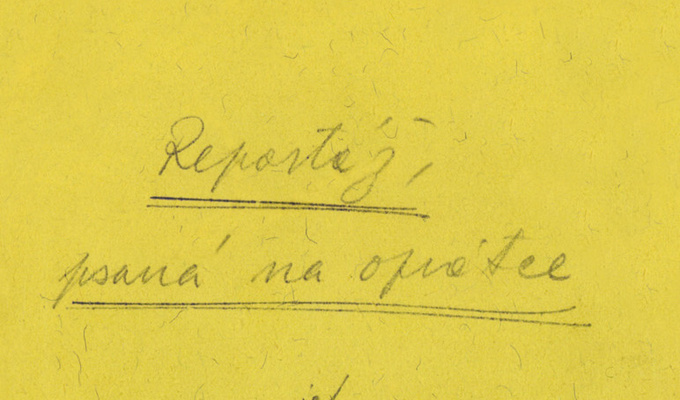The former Museum of the Workers’ Movement (MWM) was created in 1990 by the gradual transformation of three Prague museums – the Klement Gottwald Museum (KGM), founded in 1954 and residing in Rytířská street, the Julius Fučík Museum (JFM), which was established as a branch of the KGM in 1988 at Smetanovo nábřeží in the Faculty of Journalism building of Charles University, and the V. I. Lenin Museum (VILM), the first exhibition of which opened in 1953 in Hybernská street.
The origin of the MWM in the National Museum Archives is connected directly with the donation agreement signed between the MWM's director, RSDr. Libuše Eliášová, and the National Museum's director, PhDr. Michal Lukeš, Ph.D, on 21 May 2015. After the contract was signed, the MWM collections were gradually transferred under the management of the National Museum, the whole process finishing in mid-2017. In connection with the planned systematic recording of the material and with regard to the character of the preserved material, it was stored in various parts of the National Museum, while preserving the internal context of the individual parts. The largest collection was taken over by the Historical museum; specifically, the museum section went to the department of modern Czech history of the National Museum, and the archival material to the National Museum Archives; the rich literary fonds was transferred to the National Museum Library and also to the department of modern Czech history. Despite the fact that the way of recording and processing material differs in individual departments, the institutional management on the side of the National Museum ensures that the completeness of the collection will be maintained, as this was one of the conditions of the donation contract.
The archival part of the original collections, which is delimited approximately to the period from 1848 to the 1980s and contains hundreds of thousands of individual items, holds, for example, an extensive set of written sources and miniature prints (which are further categorized chronologically and thematically), which was formed by years of acquisition activities by the former KGM. We must also mention the archival material from the personal fonds of the presidents Klement Gottwald and Antonín Zápotocký. Besides documents and correspondence concerning Klement Gottwald, there are also his honorary citizenships and work commitments associated with his name.
In connection with JFM and the connected activities of Gusta Fučíková, this includes personal fonds of both of them – Julius and Gusta Fučík. The original of ‘Reports Written under the Noose’ is of extreme importance (not only in the context of the collection); it is a part of Julius Fučík's personal fonds, together with all its extant foreign-language editions. There are also the original manuscripts of Fučík's books and articles from the time of the first republic, and the extant documentation on his imprisonment. The material that has been preserved in the estate of Gusta Fučíková is undoubtedly important for understanding context of the creation of the Fučík cult after 1948. Regarding the functioning of contemporary museums, their original registries provide an exceptionally important source of information. Among other things, they include correspondence with other institutions at home and abroad, and also exhibition concepts for temporary and permanent exhibitions. In the context of social movements and their connection to the political situation, the documents on the “Peace Movement” offer an important source of information. In connection with the development of agitprop theatre, these are the materials that document the activities of the amateur El-Car agitprop group.
The overall documentary value of the MWM collection held in the National Museum Archives lies primarily in its value as a unique source for the interpretation and understanding of inner and outer aspects of the development of the workers' movement, and subsequently also of Czechoslovak society between 1948 and 1989, from the point of view of those who actively participated in it.

